Journal Contents
Smithing at the priory of Lavinadiere, Correze, France, 13th and 16th centuries
Nadine Dieudonne-Giad and Patrice Conte
Pages 1-7
The Priory of Lavinadiere was a possession of the order of the Latin Canons of the Holy Sepulchre. Study of the clergy-house site began in the mid-1990s, and excavations have been undertaken there on a regular basis since 2003 .Evidence for smithing activities in the priory was recorded in the filling of a ditch dating from the Middle Ages. A 16th-century smithy was excavated, located north of the stone buildings. Residues from the two periods were studied, hearth bottoms were measured and weighed, and metallographic examination undertaken. The bottoms were found to form two groups. The distribution of hammerscale in the smithy was examined, leading to hypotheses about space management. The hammerscale was sorted by type and their micro structures studied. Metallurgical activity in the priory seems to have consisted of the making and repair of small objects.
From laboratory to field experiments: shared experience in brass cementation
David Bourgarit and Nicolas Thomas
Pages 8-16
The aim of the paper is to present the experimental approach followed by the authors in order to investigate ancient metallurgical processes. Multi-scale experiments based on model systems where complexity is gradually increased are both necessary and complementary. They are a way of optimizing the scanning of working conditions inferred for ancient metallurgical processes. The example of the on-going experimental investigation of the brass cementation process serves as an illustration.
Examination of an 18th-century English anchor from Puerto Deseado (Santa Cruz province, Argentina)
N C Ciarlo, H De Rosa, D Elkin, H Svoboda, Cristina Vazquez, D Vainstub and L Diaz Perdiguero
Pages 17-25
The results of morphological and microstructural examination of an anchor found near the site of the shipwreck (1770) of the British sloop-of-war HMS Swift during the enlargement of Puerto Deseado pier are presented. The following analyses were performed: Microstructural characterization, determination of chemical composition, and microhardness testing. Some aspects of the manufacturing process and the material used were determined. The characteristics of the anchor are consistent with those of 18th-century English anchors. According to these results, the anchor’s possible link with the wreck of the Swift is examined.
Some preliminary observations on hammerscale and its implications for understanding welding
Tim Young
Pages 26-41
This paper re-examines some archaeological examples of hammerscale in the light of modern investigations of millscale, attempts to provide a partial framework for the interpretation of archaeological hammerscale and assesses the potential of hammerscale to provide further archaeologically-useful information in the future. In particular, the controls on the chemical composition of the hammerscale are described and the relative inputs from the substrate (the iron and its slag inclusions), the fuel ash, the hearth ceramic and welding fluxes are discussed for different systems by employing new data from several sites that employed different materials and technologies. It is argued that there is no single dominant source for the non-iron component of hammerscale, but that each of these inputs is important in different settings.
Issues in the introduction of tonnage steel in the United States, 1867-1883
Robert Gordon
Pages 42-51
Examples of the early US production of puddled, pneumatic, and open hearth steel show variable and uncertain quality due to inadequate control of carbon, phosphorus, and non-metallic inclusions. An inhomogeneous product and difficulties with process control led to the early demise of puddled steel manufacture. Analyses for nitrogen and silicon distinguish between pneumatic and open hearth steel. Makers of open hearth steel had reduced phosphorus to acceptable levels by 1873 but needed longer to gain, control of carbon content. Good quality pneumatic steel was made after 1880. John and Washington Roebling, engineers with experience of metallurgy, successfidly managed the transition from wrought iron to steel while building the Brooklyn Bridge. The Springfield Armory, operating within a military-government complex, used various kinds of pneumatic and open hearth steels over a decade before reverting back to iron for its rifle barrels.
The colour of copper alloys
Jui-Lien Fang and Gerry McDonnell
Pages 52-61
A series of copper alloys containing varying amounts of different alloying elements were cast in the laboratory. Their colour properties were measured by a spectrophotometer with an integrating sphere. The results show that alloying and heat treatment do change the colour of copper alloys; the colour of bronzes containing 18%-33% tin changed from gold-like to silver-like as the tin content increased. This research provides the quantitative basis for the influence of alloying on the colour of copper alloys, which suggests that the aesthetic consideration of colour properties may be of equal or perhaps greater importance than the practical consideration of physical and mechanical properties for the selection of alloys in the past.
![[Test] The Historical Metallurgy Society](https://test.historicalmetallurgy.org/wp-content/uploads/2020/02/Logo120.png)
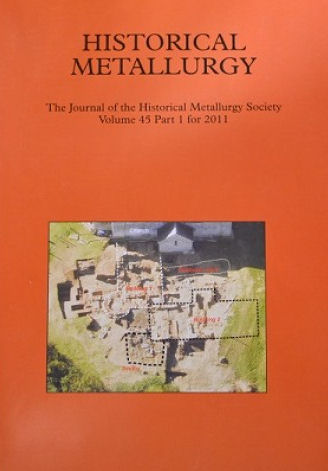
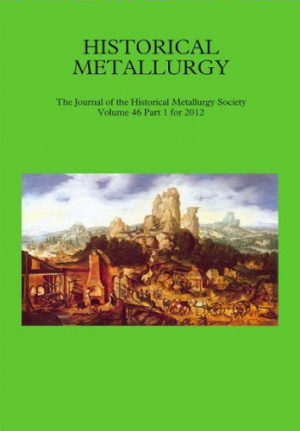
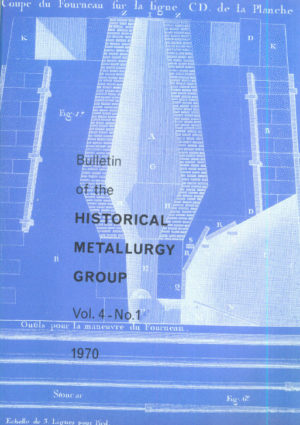
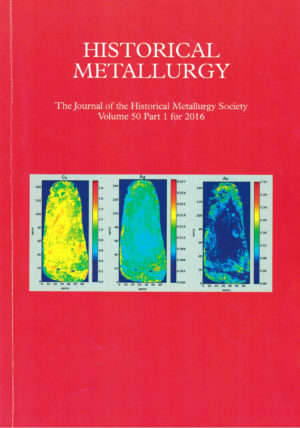
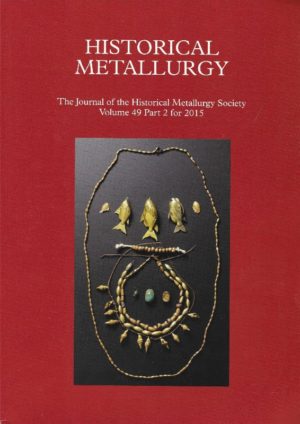
There are no reviews yet.